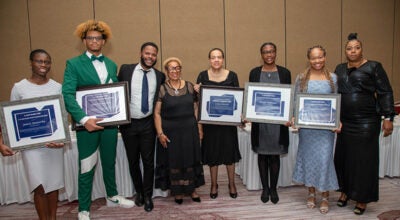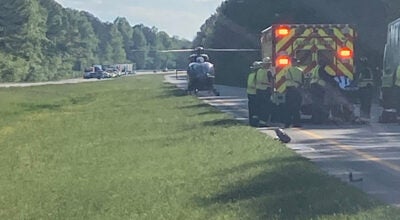SPS to offer virtual summer school
Published 9:17 pm Thursday, May 21, 2020
|
Getting your Trinity Audio player ready...
|
With no firm date on when schools can reopen, Suffolk Public Schools will offer a virtual, month-long summer school program for students.
Summer school, which is free for students, will take place from July 6 through Aug. 6. No determination has yet been made for school this fall, but the most prevalent option under discussion is a combination of virtual and in-person learning.
Secondary students in summer school will continue to use Edgenuity, the platform currently in use for students during the fourth nine-week period.
Elementary students, though, will pilot an expansion of the division’s SPS Connect initiative through a new platform that will serve as a trial for a potentially larger-scale program should schools not be ready to open in the fall. Those students will receive Chromebooks and, if needed, an internet hotspot.
A small group of elementary and middle school teachers have been piloting a program known as i-Ready, which provides math and reading data to assess students, and then provides learning tools for them. It also provides information on who is accessing the program, and for how long.
The School Board will get a demonstration of the program at its June 11 meeting.
While the program can be used for grades K-8, Superintendent Dr. John B. Gordon III wants to get a better feel for how it would work on a larger scale in the event schools in the fall have to operate virtually, or will be operating under a plan that blends in-person and online instruction.
“I want to get a little bit more of a larger sample size,” Gordon said, “because I want to use the summer school as a test model to see as we expand SPS Connect to go pre-K through 5 in the fall. I need to have an educational platform that we can use for our elementary school students.”
As part of that, Gordon plans to incorporate the Canvas learning management platform, which allows schools to build digital learning environments that the company says “meets the unique challenges faced by their institution.”
It will provide a one-stop shop for the division’s educational resources, something Gordon had when he worked in Chesterfield County. The state, in its partnership with Virtual Virginia, is allowing its use for free to school divisions for the next two years. While Canvas does not have an assessment program, i-Ready does.
“The great thing about i-Ready, based on how kids perform in their mini-assessments, it’ll actually tailor their instruction so that kids are getting individualized learning plans,” Gordon said.
Gordon said summer school applications would be going out soon and said there would be a teacher for every 10 to 12 students to support them. He said elementary school principals have given him a preliminary list of students who are likely to be retained to form the basis for summer school on that level.
“it’s basically mandatory summer school” for elementary students who have low math and reading scores, Gordon said.
For secondary students, seniors who are short credits for graduation will be prioritized ahead of others wanting to take a class.
In his recent Facebook Live chat, Gordon said he received more positive comments about Edgenuity than negative, but said he is open to making some quick fixes to it for the start of school in the fall once he receives the results of a survey that will go out June 8-12.
“We want to make sure that we can provide as much support to the kids at both the elementary and secondary levels while they’re doing i-Ready and Edgenuity,” Gordon said.
As for how school in the fall will look, Gordon said everyone’s focus now is on revising budgets and then following guidelines to use the federal CARES Act money, and potentially HEROES Act money. The HEROES Act has passed the House of Representatives but has not made its way through the Senate or to President Donald Trump.
Gordon, in his Facebook Live chat, discussed a hypothetical of dividing student bodies of schools to provide in-person instruction on certain days, while also providing time for custodians to clean and disinfect schools, especially at the secondary level where students are moving more around the school. He said they also have to look at how many staff members would be at health risk by being at the school.
“Everyone is looking at multiple options, but the most prevalent one is some type of hybrid learning plan, some blended learning plan,” Gordon said, “where you have some virtual component, and you have some face-to-face component, but it’s just too early to tell with that face-to-face component how that’s going to work.”
In Suffolk, Gordon said the administrative team is actively planning for the fall.
“We’re looking at the logistics, we’re looking to get our feedback on our Continuity of Learning plan, we’re looking to see how i-Ready works in summer school,” Gordon said. “All those components right there are going to help us finalize our plans for the fall.”






